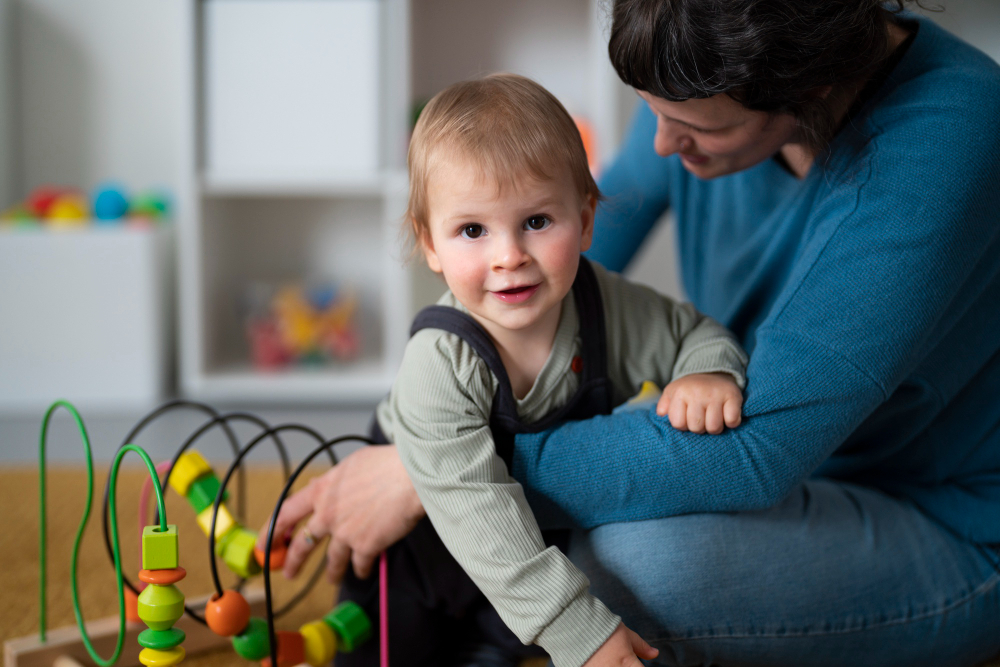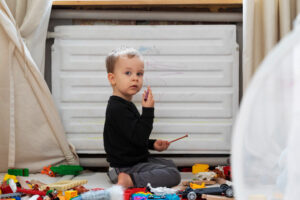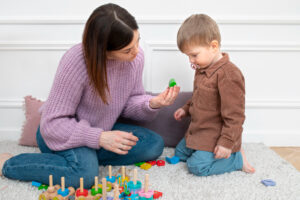
Effective OT Techniques for Autism in Early Childhood
Early childhood (typically birth to age 5) is a critical period for development. The brain is especially responsive to input, routines, relationships, and sensory experiences. Occupational therapy (OT), when started early, can support foundational skills in children with autism—helping with sensory processing, motor skills, self-care, emotional regulation, and social interaction—laying groundwork for later learning and independence.
Why Early Intervention with OT Matters
- Neuroplasticity: Young brains are highly adaptable. Interventions in early years can produce larger long‐term gains.
- Prevention of delays compounding: Gaps in skills can widen over time. Working early helps reduce the gap in things like motor coordination, attention, self-help.
- Establishing patterns and routines: Early routines become the scaffolding children use for later tasks (school, social). Helping children with autism get comfortable with routines, transitions, predictable structure helps reduce stress.
- Supporting family involvement: OT in early childhood often involves caregivers; skills are practiced at home, not only in clinic. This improves generalization, consistency, and the child’s environment overall.
Core OT Techniques for Early Childhood Autism
Here are several techniques and strategies that occupational therapists commonly use to support young children with autism. They are often combined, and the mix is tailored to each child’s strengths, challenges, sensory profile, and developmental level.
- Sensory Integration & Sensory Diets
- Assessment of the child’s sensory profile: Which sensory inputs upset them (sounds, textures, lights), or which they under-respond to.
- Providing graded exposure in a controlled, playful way to sensory stimuli to build tolerance. For example, using tactile bins (sand, rice, slime), gradually introducing different textures.
- Deep pressure or compression tools: weighted blankets, vests, body brushing techniques. These help with regulation when children are over-responsive or under-responsive.
- Movement / vestibular / proprioceptive activities: swings, balance boards, crawling, jumping. These support coordination, body awareness, calm vs alert states.
- Play-Based Learning & Developmentally Appropriate Practice
- Following the child’s interests and lead: therapists use what the child is interested in (toys, games) so engagement is naturally higher. DIR / Floortime is one example.
- Embedding skills in play: rather than teaching in isolation, fine motor, social, communication, emotional regulation skills are practiced through games, pretend play, social stories.
- Using routines and structured play opportunities: predictable sequences help with learning, knowing what to expect, transitions. Visual supports often help.
- Visual Supports & Communication Aids
- Visual schedules (e.g., First-Then boards, picture routines): help children understand what’s coming, reduce anxiety around transitions.
- Social Stories or simple storyboards: to introduce social norms, expected behavior, what to do in new places or with new people.
- Choice boards or visual cues for communication: helps with expressive and receptive communication when spoken language is developing slowly. PECS (Picture Exchange Communication System) might be part of this approach.
- Motor Skills: Fine & Gross
- Fine motor exercises: play dough manipulation, threading beads, using clothespins, practicing grasping, cutting with scissors, drawing/tracing. These build hand strength, coordination, dexterity.
- Gross motor work: balancing, jumping, obstacle courses, climbing—help with coordination, muscle strength, spatial awareness.
- Motor planning (praxis): helping children plan, sequence, and execute complex movements; practice in imitation, copying, and gradually more complex tasks. OT may use games or guided movements.
- Self-Care / Activities of Daily Living (ADLs)
- Breaking down daily life tasks (e.g. dressing, feeding, handwashing, toileting) into small, teachable steps. Using visuals, prompting, repetition.
- Adaptive tools or modifications as needed: clothes with easier fasteners, utensils with grips; environmental modifications so the child can be more independent.
- Emotional Regulation & Social Skills
- Teaching calming / regulation techniques: deep breathing, using calm corners, tearing paper, fidget tools, or squeezing (sensory) objects. Helps children when they are overwhelmed.
- Role-play, social stories, modeling turn taking and sharing: helps children understand and practice social rules in low pressure settings.
- Predictable routines + transitions with supports so children know what comes next, reducing anxiety.
Putting Techniques Into Practice: Designing an OT Plan
Here are steps an OT might take (or suggest caregivers/teachers follow) when applying these techniques in early childhood:
- Assessment & Individualization
- Sensory profile (which senses are over-sensitized or under-responsive)
- Fine & gross motor baseline (what the child can do vs where they struggle)
- Communication style and social interaction level
- Family priorities: which daily activities or settings are most important (home, preschool, mealtimes, bedtime).
- Goal Setting
- Select small, meaningful, measurable goals (e.g. buttoning coat, tolerating shirt seam texture, using a spoon independently, staying in circle time for 5 minutes)
- Ensure goals have contexts where they matter (home, preschool etc.)
- Planning Interventions
- Mix of sensory, motor, play, ADL, communication supports
- Incorporate visual supports and routines throughout the day
- Embed practice in natural settings (e.g. during meals, playtime, getting dressed)
- Caregiver / Teacher Collaboration
- Train caregivers and teachers in strategies so they can carry over in daily routines
- Use visual schedules at home and preschool; build consistency
- Monitoring, Adjusting & Generalizing
- Regular review: what’s working, what’s hard, what needs tweaking or stepping up
- Generalizing skills across contexts: e.g., crop in fine motor work in preschool arts, home chores etc.
- Gradually increase challenge to support growth
Examples: What OT Looks Like in Action
- A preschooler who struggles with dressing: OT works on ripping velcro, sorting through different fabrics/fasteners, practicing with adaptive clothing, using visuals that show the steps.
- A young child who refuses to wear certain textures: OT introduces textures gradually, using touch, play bins, with reinforcement.
- During circle time in preschool: OT uses visual schedules, provides a seat cushion or movement breaks, uses “first-then” charts to help child anticipate transition.
- Building motor skills: obstacle course (crawling, jumping, balancing) in playground or therapy space, fine motor stations with beads/play dough/cutting.
Evidence & Considerations
- Techniques like sensory integration, visual supports, routines are well supported in practice though the strength of evidence can vary. Many studies report positive effects for improved self-regulation, motor skills, ADLs.
- Early Start Denver Model (ESDM) is one early intervention model combining behavioral, developmental, play-based and visual strategies; shown to improve cognitive and adaptive outcomes in toddlers with autism.
- Care should be taken to individualize; what works well for one child may not for another. Sensory profiles differ, motor readiness differs, social/emotional temperament differs.
Tips for Caregivers & Educators
- Create consistency: use visual routines and schedules everywhere (home, preschool)
- Keep new experiences gradual and supported
- Celebrate small wins—progress may be slow and uneven but every step matters
- Build child’s agency: let children choose where possible, respect their sensory preferences
- Maintain communication across settings (therapist, home, school) so interventions are coherent
Conclusion
Early childhood is a powerful window for occupational therapy to make a difference for children with autism. Through sensory integration, motor skill development, use of visual supports, structured routines, and collaboration involving caregivers and educators, OT can help children build independence, emotional regulation, social skills, and foundational abilities. With early, tailored, playful, and consistent techniques, children with autism can thrive in everyday life settings from their earliest years.

